Tourist Places Information - Mysore Karnataka
Welcome to Mysore,
Mysore is the second largest city in the state of Karnataka. The city is situated at the base of Chamundi Hills. Mysore is famous for the Dasara celebrations during which a large number of tourists visit the city. Mysore is also known as City of Palaces. There are a large number of palaces around the city to be visited. The famous Jayalakshmi Vilas Mansion is now being converted into a museum and is dedicated to folk culture.
Today it has developed into a modern city like many other cities in the country. But this city has not lost touch with its rich historical and cultural legacy. Mysore is a favourite tourist destination in Karnataka. Tourist from within the country and from outside come see the splendour of the city of Mysore. The city has a number of places a person can visit. There are a number of Royal buildings, gardens, waterfalls, temples, museums and modern amusement parks.
Area: 128.4 km²
Population: 755,379 (2001) UNdata
Number of airports: 1
Chamundeshwari Temple
The Chamundeshwari Temple is located on the top of Chamundi Hills about 13 km from the palace city of Mysore in the state of Karnataka in India. The temple was named after Chamundeshwari or Durga, the fierce form of Shakti, a tutelary deity held in reverence for centuries by Mysore Maharajas. The original shrine is thought to have been built in the 12th century by Hoysala rulers while its tower was probably built by the Vijayanagar rulers of the 17th century. In 1659, a flight of one thousand steps was built leading up to the 3000 foot summit of the hill.
At the temple are several images of Nandi (the bull mount of Shiva). There is a huge granite Nandi on the 800th step on the hill in front of a small Shiva temple a short distance away. This Nandi is over 15 feet high, and 24 feet long and around its neck are exquisite bells. The temple has a seven story tall 'Gopura' decorated with intricate carvings. The deity of the goddess is said to be made of gold and the temple doors of silver.
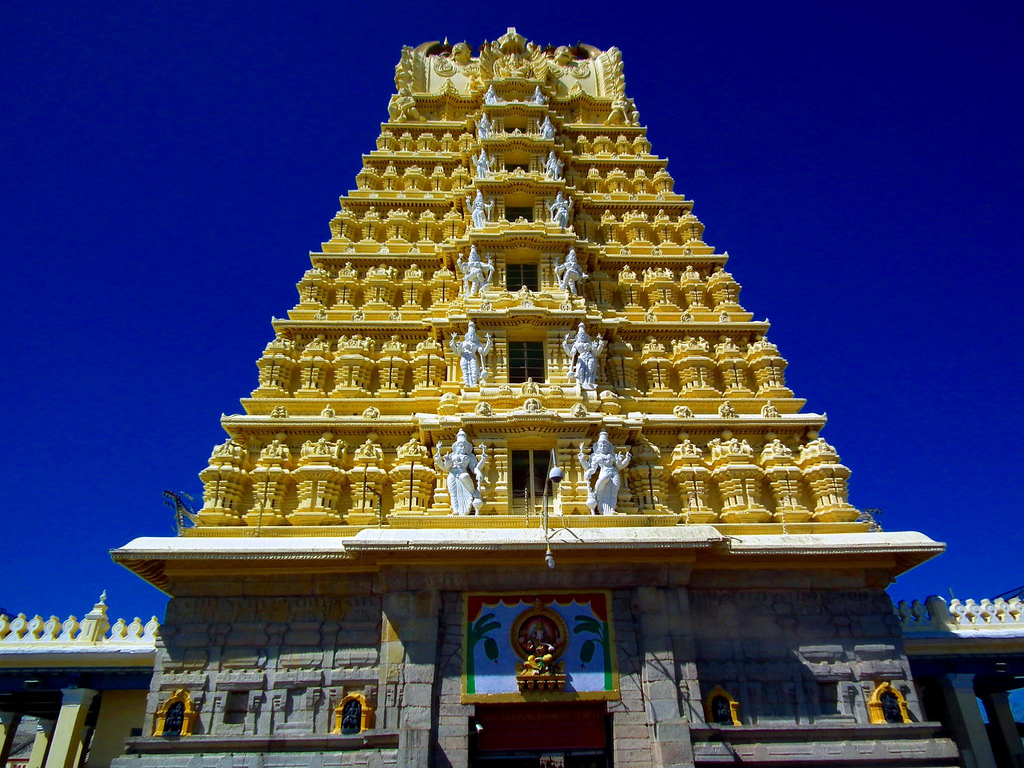

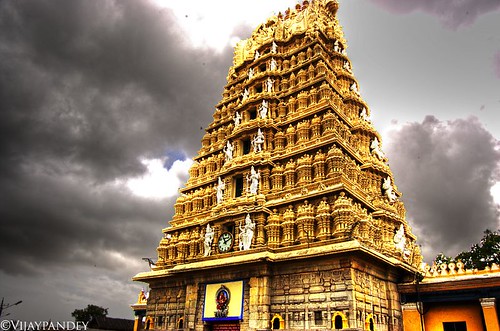
Mysore Palace
The Palace of Mysore is a palace situated in the city of Mysore in southern India. It is the official residence of the Wodeyars - the erstwhile royal family of Mysore, and also houses two durbar halls (ceremonial meeting hall of the royal court). Mysore has a number of historic palaces, and is commonly described as the City of Palaces. However, the term "Mysore Palace" specifically refers to one within the old fort. The palace was commissioned in 1897, and its construction was completed in 1912. It is now one of the most famous tourist attractions in Mysore. Although tourists are allowed to visit the palace, they are not allowed to take photographs inside the palace.
The architectural style of the palace is commonly described as Indo-Saracenic, and blends together Hindu, Muslim, Rajput, and Gothic styles of architecture. It is a three-storied stone structure, with marble domes and a 145 ft five-storied tower. The palace is surrounded by a large garden. The three storied stone building of fine gray granite with deep pink marble domes was designed by Henry Irwin. The facade has seven expansive arches and two smaller ones flanking the central arch, which is supported by tall pillars. Above the central arch is an impressive sculpture of Gajalakshmi, the goddess of wealth, prosperity, good luck, and abundance with her elephants.
Every autumn, the Palace is the venue for the famous Mysore Dasara festival, during which leading artists perform on a stage set up in the palace grounds. Ambavilasa or Diwan e Khas, Gombe Thotti (Doll's Pavilion), Kalyana Mantapa are the unique rooms in the palace and it also owns some temples.



Mysore Zoo (Jayachamarajendra Zoo)
?Mysore Zoo is one of the oldest and most popular zoos in Southern India. Located very close to the Palace of Mysore, the zoo is home to a wide range of wild species. The official name for the zoo is Shri Chamarajendra Zoological Gardens, though it is known commonly by its shortened name. Mysore Zoo is one of the city's most popular attractions. It was established under royal patronage in 1892, making it one of the oldest zoos in the world.
?
Initially, the zoo covered an area of ten acres but after some time the zoo was expanded to nearly forty-five acres. A striking part of the zoo is the `orphange`, which is meant for rearing, abandoned animals. The zoo is also the breeding ground for animals like zebra, wild beast or Eland Antelope, Barbery sheep, Emus, Giraffe, Kangaroos.
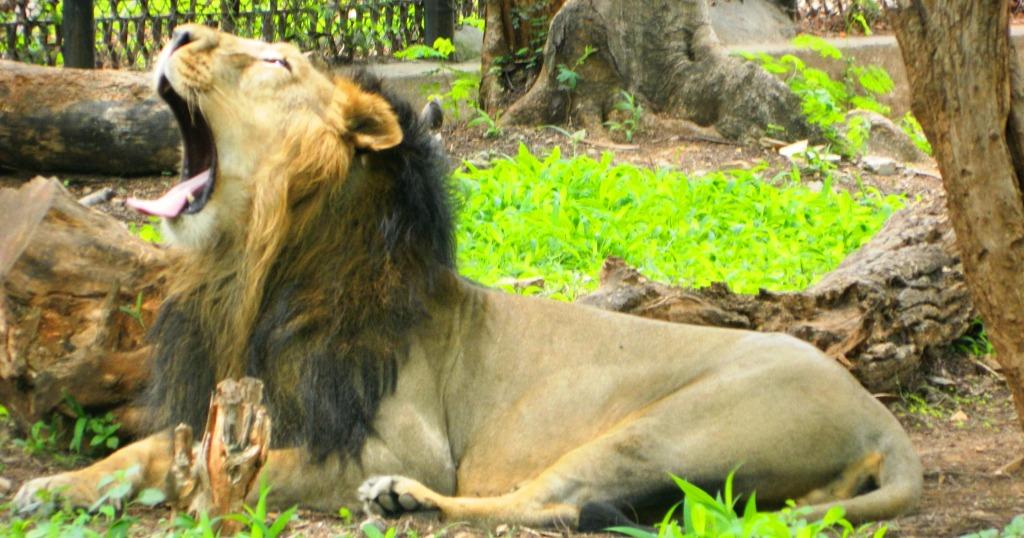


Jaganmohan Palace and Art Gallery
Jaganmohan Palace is a palace in Mysore, in the state of Karnataka, India. Its construction was completed in 1861 and was initially used by the Wodeyars, kings of Mysore as their home. It was later converted into an art gallery. The palace is built in traditional Hindu style and has three stories. In 1900, an external facade with a hall behind it was added to the palace. This facade has three entrances and the entablature has religious motifs and miniature temples crafted on it. The walls of the interiors are painted with murals. These mural paintings which follow the traditional style of the Mysore school of painting depict the Dasara scene and the canvas depicting the sequence of the Jumboo Savari stretches across three walls.
The art gallery contains one of the largest collection of artefacts in South India. Most of these artefacts are paintings, prominent among which are those by Raja Ravi Varma, some of which demonstrate scenes from the Hindu epics, Ramayana and Mahabharatha. The collection of paintings in the gallery exceed 2000 in number and these belong to different Indian styles of painting like Mysore, Mughal and Shantiniketan. 16 paintings of Raja Ravi Varma were donated to the gallery by Jayachamarajendra Wodeyar.
Other exhibits here include weapons of war, musical instruments, sculptures, brassware, antiques coins and currencies. Some other unique artefacts exhibited here is a French clock which has a mechanism in which a parade by miniature soldiers is displayed every hour; beating drums mark the seconds and a bugle marks the minute. Paintings made on a grain of rice which can be viewed only through a magnifier are also displayed here.


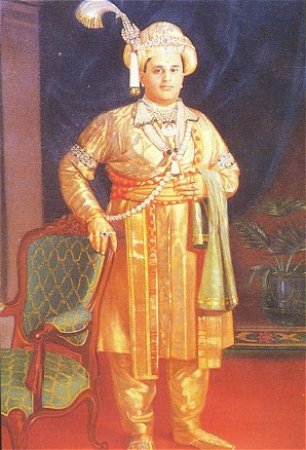
Lalitha Mahal PALACE
The Lalitha Mahal is the second largest palace in Mysore. It is located near the Chamundi Hills, east of the city of Mysore in the Indian state of Karnataka. The palace was built in 1921. Built on a raising ground, the palace was fashioned on the lines of the St. Paul's Cathedral in London and is one of the imposing structures of the Mysore city. The palace painted in pure white colour is strikingly elegant. It was converted into a heritage hotel in 1974. It is now run as an elite hotel of the Ashok Group of the India Tourism Development Corporation (ITDC) under the Government of India. However, a veneer of the original royal ambience of the palace is maintained.
The palace built in Renaissance architectural style is considered an adaptation of the St. Paul's Cathedral in London, particularly the central dome. The architecture of the palace reflects English manor houses and Italian Palazzos. It is a two storied structure. The supporting structure of the palace is of Ionic double column. At the ground level, there is a projecting porch. Spherical domes with the dominating central dome sets the front elevation of the palace. Decorative stained glass has been extensively used to enhance the elegance of the palace both in the exterior facades and in interiors doors, windows and ceilings. A lovely view of the Chamundi Hill to the left and the Mysore city in front of the palace is seen from the balcony upstairs. The palace has exquisitely designed viceroy room, a banquet hall, a dancing floor and an Italian marble staircase (has an arresting curve) and also embellished with small ornamentations, which are said to be replicas from various palaces in Britain.
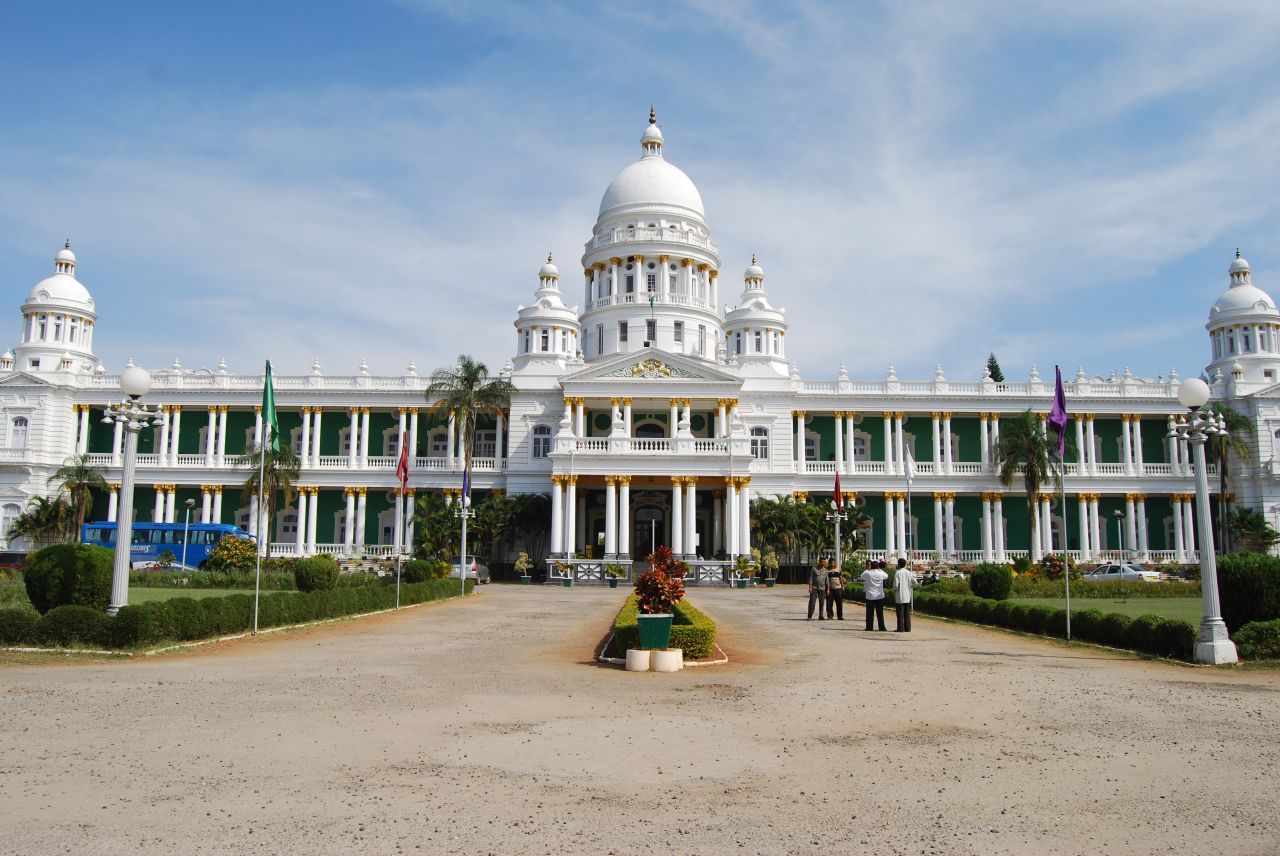

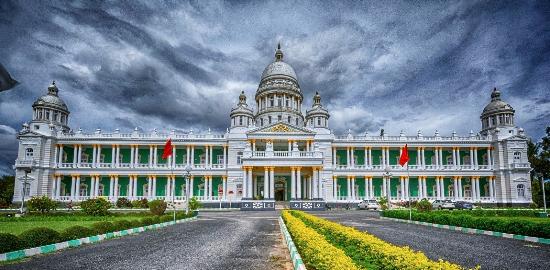
St. Philomena's Church
St. Philomena's church is a church built in the honour of St. Philomena in the Diocese of Mysore, India. It was constructed in 1936 using a Neo Gothic style and its architecture was inspired by the Cologne Cathedral in Germany. The church was designed by a Frenchman named Daly. It was designed to be built in the Neo Gothic style with inspiration drawn from the Cologne Cathedral. The floor plan of the cathedral resembles a cross. The long part of the cross is congregation hall called the nave. The two arms of the cross are the transepts. The part containing the altar and the choir is the crossing.
The cathedral has a crypt that houses a statue of St. Philomena. The twin spires of the church are 175 feet (53 m) in height and they resemble the spires of the Cologne Cathedral and also the spires of the St. Patrick's Church in New York. The main hall (nave) can seat up to 800 people and contains stained glass windows depicting scenes from the birth of Christ, the Last Supper, the Crucifixion, the Resurrection and the Ascension of Christ.
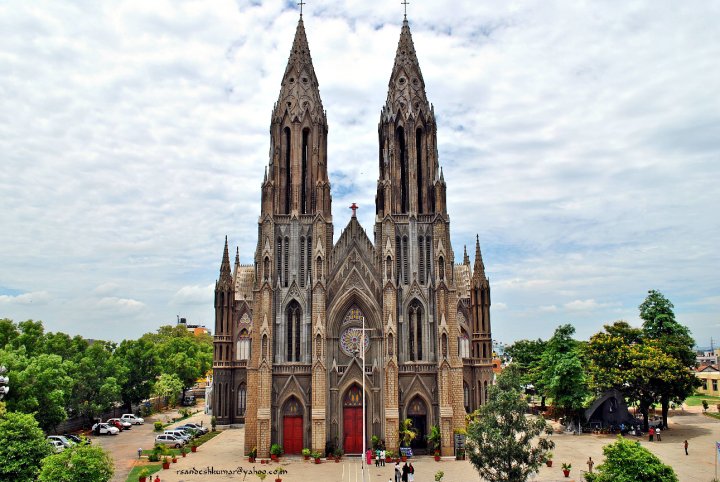

Nanjangud Nanjundeshwara Temple
Srikanteshwara Temple in Nanjangud near Mysore is a holy temple devoted to Lord Shiva and has been constructed in the Dravidian style. This temple is also synonym as Nanjundeshwara temple, and this quaint town claims to have been the residence of Lord Shiva since immemorial times. The temple that stands today is known to have been constructed during the reign of Hoysala king. The original temple is believed to be constructed during the Ganga period that lasted from 325 to 1000 century. Tipu Sultan and the Woodeyar kings are said to have been deeply associated with this temple. According to historical data, it is said that Tipu Sultan's favorite elephant was bestowed with eyesight here, and since then the reigning deity of the temple was also called as Hakim Nanjundeswara. Devotees still believe the temple to have healing properties, and this is one reason, the temple is flocked by believers from all over the world. Besides the main temple various shrines like - Narayana with consorts, Chandikeswara, Parvathi, Natya Ganapath are also worth visiting. The best time to visit the temple is during the festivals of Rathutsava (car festival). This festival is called Dodda Jathre and is held twice in a year. During this festival idols of the five gods - Lord Srikanteshwara, Goddess Parvathi, Lord Ganapathi, Lord Subramanya and Lord Chandikeshwara are placed in separate chariots and an elaborate Puju is performed. Thousands of devotees participate in this gala festival.


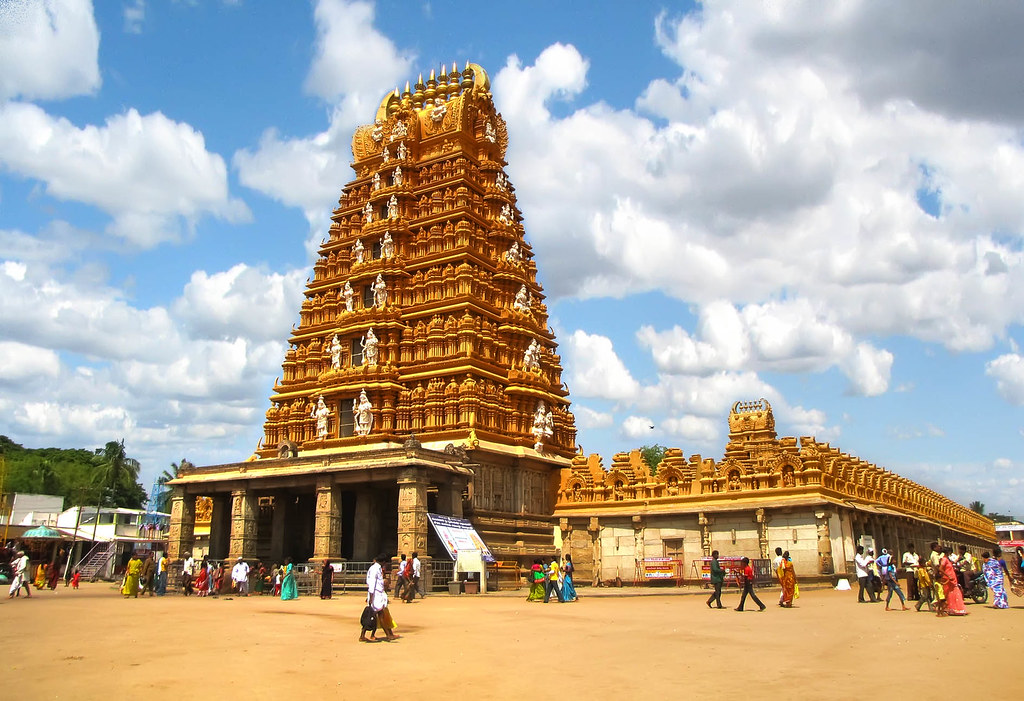
Srirangapatna Sri Ranganathaswamy Temple
The Ranganthaswamy temple (usually referred to as "Sri Ranganathaswamy") in Srirangapatina, in the Mandya district of Karnataka state, India, is dedicated to the Hindu god Ranganatha (a manifestation of the god Vishnu). It is one of the five important pilgrimage sites along the river Kaveri for devotees of Ranganatha. These five sacred sites are together known as Pancharanga Kshetrams in Southern India. Since Srirangapatna is the first temple starting from upstream, the deity is known as Adi Ranga (lit; "first Ranga") The town of Srirangapatna, which derives its name from the temple, is located on an island in the river Kaveri.
According to the Archaeological Survey of India (ASI), the temple is one of considerable antiquity. An inscription at the temple reveals it was first consecrated in 894 A.D. by a local chief called Tirumalaiah, a vassal of the Western Ganga dynasty. In early 12th century, Hoysala King Vishnuvardhana (r.1108-1152) granted the village of Srirangapatna to the Vaishnava saint Ramanujacharya as an agraharam (place of learning). An inscription of the great Hoysala King Veera Ballala II (1210 A.D.) confirms that additions and renovations were made to the temple at that time. The tower over the entrance bears features consistent with Vijayanagara architecture. According to historian George Michell, contributions were also made by the Wodeyar kings of the Kingdom of Mysore. The temple is protected by the Archaeological Survey of India as a monument of national importance.
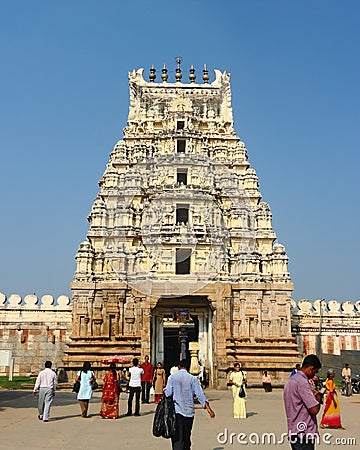

Daria Daulat The Palace of Tipu Sultan Srirangapatna
Srirangapatna has since time immemorial been an urban center and place of pilgrimage. During the Vijayanagar empire, it became the seat of a major viceroyalty, from where several nearby vassal states of the empire, such as Mysore and Talakad, were overseen. When, perceiving the decline of the Vijayanagar empire, the rulers of Mysore ventured to assert independence, Srirangapatna was their first target. Raja Wodeyar vanquished Rangaraya, the then viceroy of Srirangapatna, in 1610 and celebrated the Navaratrifestival in the town that year. It came to be accepted in time that two things demonstrated control and signified sovereignty over the Kingdom of Mysore by any claimant to the throne:
Successful holding of the 10-day-long Navaratri festival, dedicated to Chamundeshwari, patron goddess of Mysore;
Control of the fort of Srirangapatna, the fortification nearest to the capital city of Mysore.
?Srirangapatna remained part of the Kingdom of Mysore from 1610 to after India's independence in 1947; as the fortress closest to the capital city of Mysore, it was the last bastion and defence of the kingdom in case of invasion.
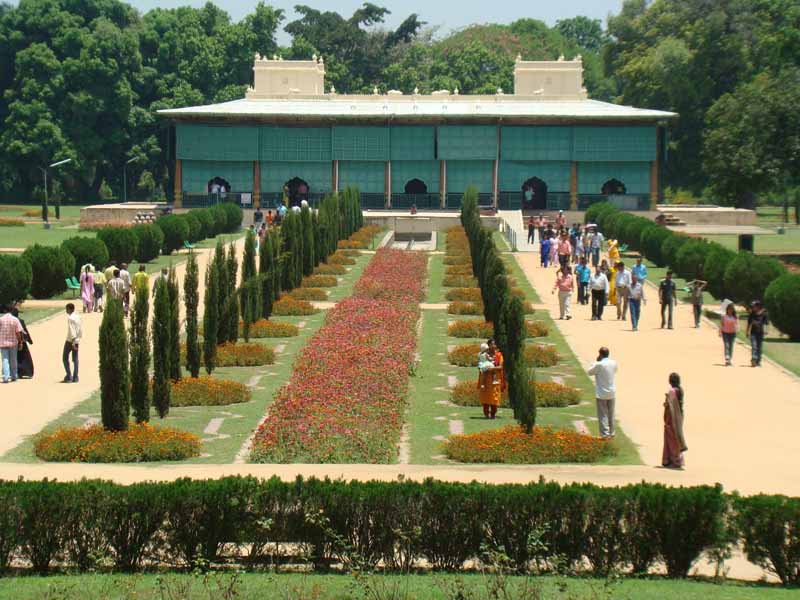

Tippu Gumbaz Srirangapatna
The Gumbaz was raised by Tippu Sultan in 1782-84 at Seringapatam, as a mausoleum for his father and mother. The Mausoleum was surrounded by a cypress garden which is said to have different species of flowering trees and plants collected from Persia,Ottoman Turkey, Kabul and French Mauritius, which were collected by Hyder's son and successor, Tippu Sultan.
The original carved doors of the mausoleum have been removed and are now displayed at the Victoria and Albert Museum, London. The present door made of ebony, and beautifully decorated with ivory was gifted by Lord Dalhousie.
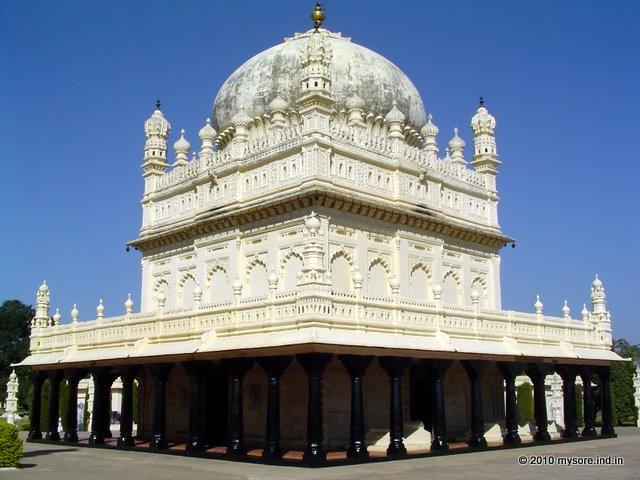
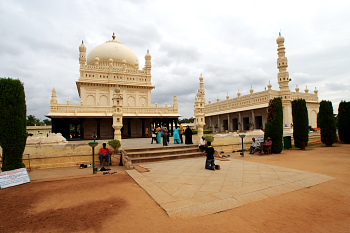

Ranganathittu Bird Sanctuary
The islets came into being when an embarkment across the Kaveri river was built in 1648 by the then Mysore King, Kantirava Narasimharaja Wadeyar. The ornithologist Dr. Salim Ali observed that the isles formed an important nesting ground for birds, and persuaded the Wodeyar kings of Mysore to declare the area a wildlife sanctuary in 1940. The Forest Department of Karnataka State is maintaining the bird sanctuary and puts its efforts to improve the sanctuary, which include purchase of nearby private lands to expand the protected area.
?
Roughly 170 birds have been recorded here. Of these, the painted stork, Asian openbill stork, common spoonbill, woolly-necked stork, black-headed ibis, lesser whistling duck,Indian shag, stork-billed kingfisher, egret, cormorant, Oriental darter, and heron breed here regularly. The great stone plover, and river tern also nest here. The park is home to a large flock of streak-throated swallows. During the months of January and February, more than 30 species of birds are found and the season of the sanctuary is from November to June. About 50 pelicans have made Ranganathittu as their permanent home.


Balumuri Water Point
Balmuri near Mysore city is a popular picnic spot. In this area Cauvery river flows wide over a rocky bed. A check dam runs across the river more like a wall trying to stop the flow. That's basically to hold the water of Cauvery to feed the many irrigation canals radiate out of this location. When the check dam is filled to the brim, water overflows in a neat long cascade..
At a distance of 15 Kms from Mysore near Brindavan Gardens, Balmuri Falls & Edumuri Falls are man-made waterfalls on the way to KRS dam. Edumuri falls is about 1 km from Balmuri Falls.
Balmuri falls is the famous of the two and is a favorite film shooting spot. Balmuri Falls are actually small falls created by a check-dam constructed on river Cauvery. The water flow is not heavy during the dry season and it is safe to enjoy & play in the water here. It is a good picnic spot and typically visited in the winter.
Edumuri falls is about 500 feet east of Balmuri falls and is a good spot to swim and play in the water. There is also an ancient Ganesha temple in the vicinity.
About 8 Km before KRS dam, take right turn at Belagola and the Balmuri falls is 3 Km from here.


Brindavan Garden ( KRS DAM )
?
The Brindavan Gardens, then called the Krishnarajendra Terrace Garden, on the Krishnaraja Sagar Dam site, one of the most beautifully laid out terrace gardens in the world. It is world famous for its symmetric design. The creative beautification of the whole dam complex has been the achievement of Sir Mirza Ismail, the then Dewan of the princely State of Mysore. The garden is designed based on the Shalimar Gardens of Kashmir in the Mughal style. The Department of Horticulture in 1927 started the work of laying out this garden.
The garden is enriched with fountains, terraces, parterres, running and cascading waterchannels, water chutes, lush green lawns, flower beds, shrubs and trees. This garden is a public park and it is one of the important tourist spots of India. The boating pond in the midst of the garden is a location where the visitors can enjoy a boat ride around the famous statue of Goddess Kaveri. It is a mesmerizing sight when the whole garden is lit up in the evenings. Today, the Brindavan Gardens is world famous for its ethereal beauty, grandeur and illumination/ musical fountain.
The Musical and dancing fountain, located in the North Brindavan Garden, is the main attraction of the visitors. The water, coloured lights and music are synchronized fountain to create a water ballet controlled by an aquatic organ operated through a controller. A laser show has also been developed for visitors' attraction The illumination timing is the same as that for the garden. Crowds gather in large numbers at the gallery provided for the viewers.


Somnathpur Chennakeshava Temple
At a distance of 137 km from Bangalore, 35 km from Mysore & 50 km from Shivanasamudra falls, Somnathpur is well known for the breathtaking Prasanna Chennakeshava Temple, one of the three famous & finest representations of Hoysala architecture (other two being temples at Belur & Halebid). This is one of the three Hoysala temples nominated for UNESCO World Heritage Site status. This is one of the popular tourist places to visit near Bangalore & Mysore and one of the wonderful weekend getaways from both the cities. The Hoysala temples are known for minute & intricate carvings and sculptures with metal like polishing.
Located on the banks of Cauvery River, this temple was built in 1268 by Somnatha, a general of King Narasimha III. The temple stands on a raised platform like other Hoysala temples. The temple comprises three shrines and three wonderfully carved peaks with a common Mandapa. The three sanctums once housed beautifully carved idols of Keshava, Janardhana and Venugopala. Today, the idol of Lord Kesava is missing but the other two are still worshipped by the visitors.
The temple is famous for its elaborate and intricate sculptures. The temple is enclosed in a walled courtyard with a mandapa running along the wall. The temple is built on an elevated star shaped platform. At the temple, the outer walls of the main temple are decorated with a series of star-shaped folds and the entire surface is covered with carved stone plaques. The walls above the plinth are also carved with exquisite figures of gods and goddesses taken from the Hindu puranas and arranged in vertical panels.
The most characteristic feature of this temple is its 16 different ceilings, each depicting a different stage of a blooming plantain (banana flower). Small and large pieces of finely carved stone chips are set in complicated patterns. One of the main highlights of this temple is the central wall space. There are images of deities decorated with heavy jewellery, bangles on every arm, towering crowns and chunky anklets. The vimana over the sanctums have greatly carved images of gods.
Bangalore Airport is the nearest airport which is about 174 km from Somnathpur. Mysore Junction is the nearest railway station, at a distance of 35 km from Somnathpur. It is well connected by train from Bangalore, Bagalkot, Tirupati, Tuticorin, Hubli, Chennai, Dharwar and Arsikere. Somnathpur has direct bus connectivity with Bannur (9 km), which can be reached by bus from Mysore (27 km) and Mandya (27 km).
The best time to visit Somnathpur is from October to March while the peak Season is from April to May & September to January. Usually it takes 2-3 hrs to visit this temple.
Temple Timings: 9 AM to 5.30 PM.



Talakadu Temple?
?The origin of the town is lost in antiquity; but one tradition is that its name was derived from two Kir?ta twin brothers, Tala and K?du, who, cutting down a tree which they saw wild elephants worshiping, discovered that it contained an image of shiva, and that the elephants were rishis transformed. The tree being miraculously restored, all obtained m?ksha and the place was named Tala-k?du, which was translated into Sanskrit as Dala-vana. Two stone images declared to represent the brothers are pointed out in front of the temple Veerabadra swamy. In a later age, R?ma is said to have halted here on his expedition to Lanka.
The earliest authentic mention of the city of Talek?d or Talak?du, in Sanskrit Dalavana-pura, is in connection with the Ganga line of kings. Harivarma, who has been assigned to find a place (247-266 A.D) was, according to an old chronicle, installed at Skandapura (said to be Gajalhatti, in the Coimbatore country, near where the Moy?r flows into the Bhav?ni), but resided in the great city of Dalavanapura in the Karn?ta-d?sa. Thenceforward Talk?d became the capital these powerful sovereigns and there the subsequent kings of that line were crowned.
At the beginning of the 11th century, the Gangas succumbed to the Ch?las, who captured Talk?d and gave it the name of R?jar?japura. But about a hundred years later it was taken by the Hoysala king Vishnuvardhana, who drove the Ch?las out of Mysore. After this time we find that Talk?d was composed of seven towns and five mathas or monastic establishments. The town of M?yilangi or Malingi, on the opposite side of the river, was also a large place, and had the name of Janan?thapura. Down to the middle of the 14th century, it remained a possession of the Hoysalas, and then passed into the hands of a feudatory of the Vijayanagar sovereigns, whose line appears to be known as that of S?ma-R?ja.
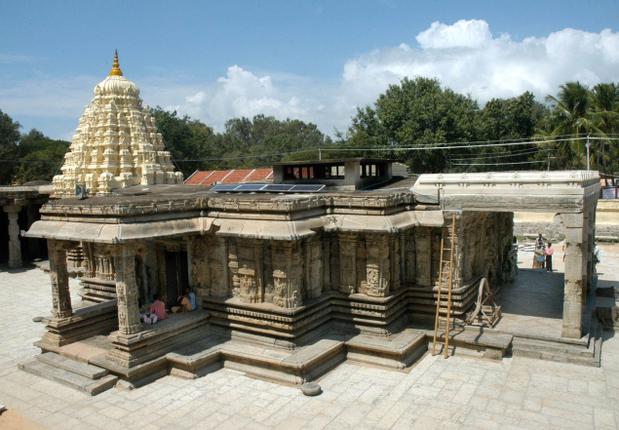
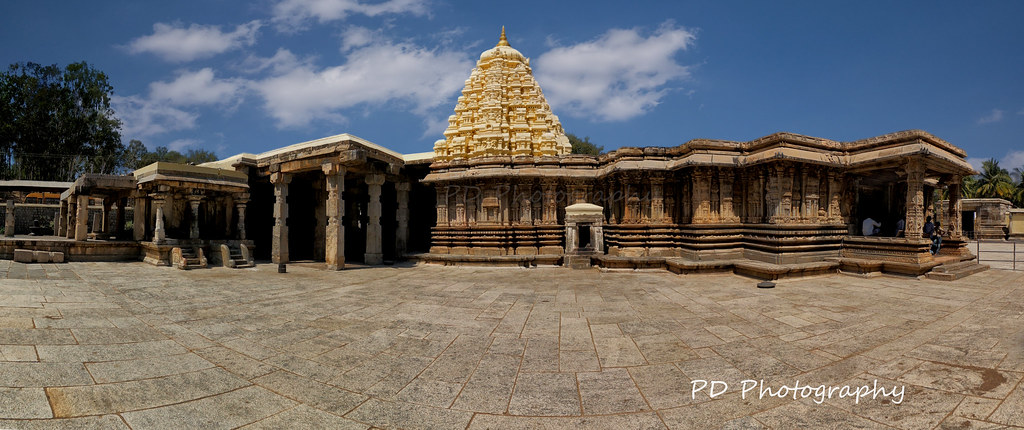

Mudukuthore Mallikarjuna Temple
This place is known for the temple of lord Mallikarjuna. The place is nearer to Mysore. During January-February a big festival for a week will be organized where selling of cattles and other items required for agriculture take place. This place is very nearer to one more holy place called Talakadu which is situated at the bank of river Kaveri. Talakadu is famous for shiva temples and particularly Vaidyanatheswara temple.
This place can be reached from Somanathapur one more well known place the temple of lord Channakeshava. The distance from Somanathapur and Mudukuthore is only 26Kms. The main city to start from is Mysore. From Mysore the total distance to Mudikuthore is 60Kms. The total route is from Mysore to Bannur which is 24Kms. Bannur to Somanathapur the distance is 10Kms and Somanathapur to Mudukuthore the distance is 26 Kms.
Only bus transportation is available. Both Karnataka state government (KSRTC) and private buses available. The total trip for Somanathapura, Thalakadu, Shivanasamudram and Mudukuthore can be booked either at Mysore or Bangalore. The best visiting time is from September to February as there will not be any rain and the various temples situated at Thalakadu can be seen clearly. These temples are submerged in sand. The climate is moderate entire year. Resorts are available in this place to stay. These are to be booked at Bangalore KSTDC centre. There are no entry fees at temple for anything. But, toll gate fees are there at 2-3 places until one reaches the place Thalakadu. All types of cameras are allowed inside the temple. The place is purely village area. No good hotels are available. Small hotels are available at Thalakadu which is only 4 Kms away. This place is not a shopping place. Normal practice of the trip is to visit Somanathapur temple (from Mysore) and then proceed to Mudukuthore and then to Thalakadu. If one is interested to see the sun set in Thalakadu, the trip can changed to proceed to Shivanasamudram from Somanathpur and then frm Shivanasamudram to Thalakad. In the latter case, be sure to reach before 4.00pm as the temples at Thalakad cannot be seen.

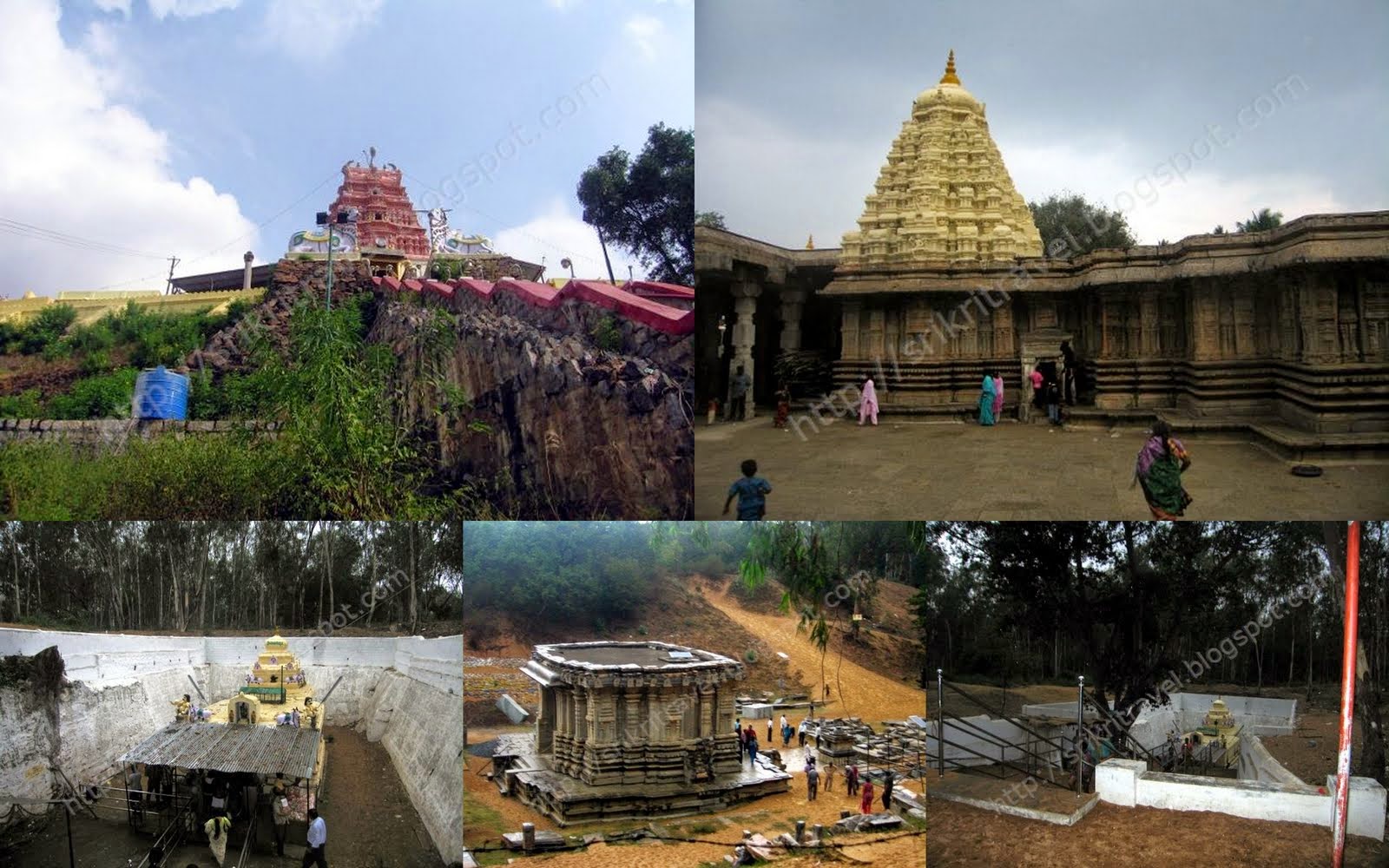

Shivanasamudra Falls
Shivanasamudra is a small island town in the Mandya district of Karnataka. It is 65 km east of Mysore and 120 km from Bangalore. Situated on the banks of the River Cauvery, the area is surrounded by forested hills and lush green valleys. Here the Cauvery River winds its way through the Deccan Plateau and drops downstream to form the beautiful twin waterfalls. The western stream is known as Gaganachukki while the eastern one is known as Bharachukki. Gaganachukki cascades down a height of 98 metres with the maximum flow of 667,000 cubic feet per second. This is the waterfall where Asia’s first hydroelectric power station was set up in the year 1905. Bharachukki is one km away from the Gaganachukki fall. The cascading edge of Bharachukki is a little wider than that of Gaganachukki. One of its sections resembles a ‘U’ just like the famous Niagara Falls. The currents here are quite strong and the gorge is quite deep. Therefore, swimming is not allowed here due to safety reasons.
The falls are at their best during the monsoon season i.e. from June to September. These are also known as Siva Samudram literally meaning Shiva’s Sea. Watching the river falling down into a cloud of foaming spray is a breathtaking experience. These falls are the second biggest waterfall in India and the sixteenth largest in the world. There are a number of ancient temples including Shivanasamuram and Somanathpur Temple located around the region. The place is a paradise for nature lovers and is a perfect canvas for artists, poets, writers and painters.
Visitors should carry food items and water as there are no proper food stalls or restaurants nearby. Weekends are crowded so weekdays are the best option for enjoying the thrilling sounds of the falls. One can enjoy boating in the small circular boats which takes you near the stunning waterfalls. For photography buffs, the balconies constructed near the Bharachukki falls provide a safe place for capturing beautiful shots.




